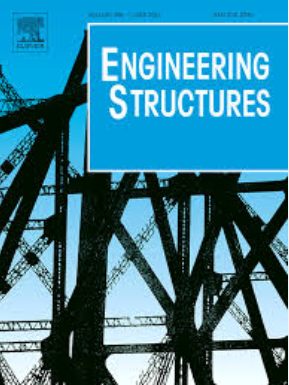Operational temperature effect on the behavior of magnetorheological dampers
IF 5.6
1区 工程技术
Q1 ENGINEERING, CIVIL
引用次数: 0
Abstract
Magnetorheological (MR) fluid exhibits temperature sensitivity due to a decrease in its viscosity as temperature rises. When MR fluids are used in dampers, this physical phenomenon results in a reduction in the resistive force generated. Temperature changes in MR fluid can occur due to ambient and operational conditions. While some studies have investigated the effect of ambient temperature on the MR dampers, there is a scant literature addressed the impact of operational conditions. This gap in the literature motivates the authors to pursue two primary objectives in this study: first, to experimentally investigate the effects of MR fluid temperature on MR damper performance under different excitation conditions and applied currents; and second, to propose a parametric model including the temperature-related impacts on the MR damper behavior. An RD-8041–1 MR damper was experimentally tested under varying ranges of excitation conditions and applied current. A hyperbolic-tangent-function-based model was refined to consider MR fluid temperature effect in MR damper force prediction. The experimental results show a noticeable reduction in the performance of MR damper during operation, particularly when the damper is subjected to higher velocities and currents. The refined model effectively captures such a damper force decay caused by MR fluid temperature increase and maintains consistent accuracy in the damper force prediction during operation. Furthermore, a comparative case study evaluated the performance of the refined and original hyperbolic-tangent-function-based models in predicting the efficiency of a MR damper in cable vibration control. The simulation results indicate that the ignorance of MR fluid temperature effect may lead to an overestimation of 14.9 % in the control efficiency of a passive MR damper.
求助全文
约1分钟内获得全文
求助全文
来源期刊

Engineering Structures
工程技术-工程:土木
CiteScore
10.20
自引率
14.50%
发文量
1385
审稿时长
67 days
期刊介绍:
Engineering Structures provides a forum for a broad blend of scientific and technical papers to reflect the evolving needs of the structural engineering and structural mechanics communities. Particularly welcome are contributions dealing with applications of structural engineering and mechanics principles in all areas of technology. The journal aspires to a broad and integrated coverage of the effects of dynamic loadings and of the modelling techniques whereby the structural response to these loadings may be computed.
The scope of Engineering Structures encompasses, but is not restricted to, the following areas: infrastructure engineering; earthquake engineering; structure-fluid-soil interaction; wind engineering; fire engineering; blast engineering; structural reliability/stability; life assessment/integrity; structural health monitoring; multi-hazard engineering; structural dynamics; optimization; expert systems; experimental modelling; performance-based design; multiscale analysis; value engineering.
Topics of interest include: tall buildings; innovative structures; environmentally responsive structures; bridges; stadiums; commercial and public buildings; transmission towers; television and telecommunication masts; foldable structures; cooling towers; plates and shells; suspension structures; protective structures; smart structures; nuclear reactors; dams; pressure vessels; pipelines; tunnels.
Engineering Structures also publishes review articles, short communications and discussions, book reviews, and a diary on international events related to any aspect of structural engineering.
 求助内容:
求助内容: 应助结果提醒方式:
应助结果提醒方式:


